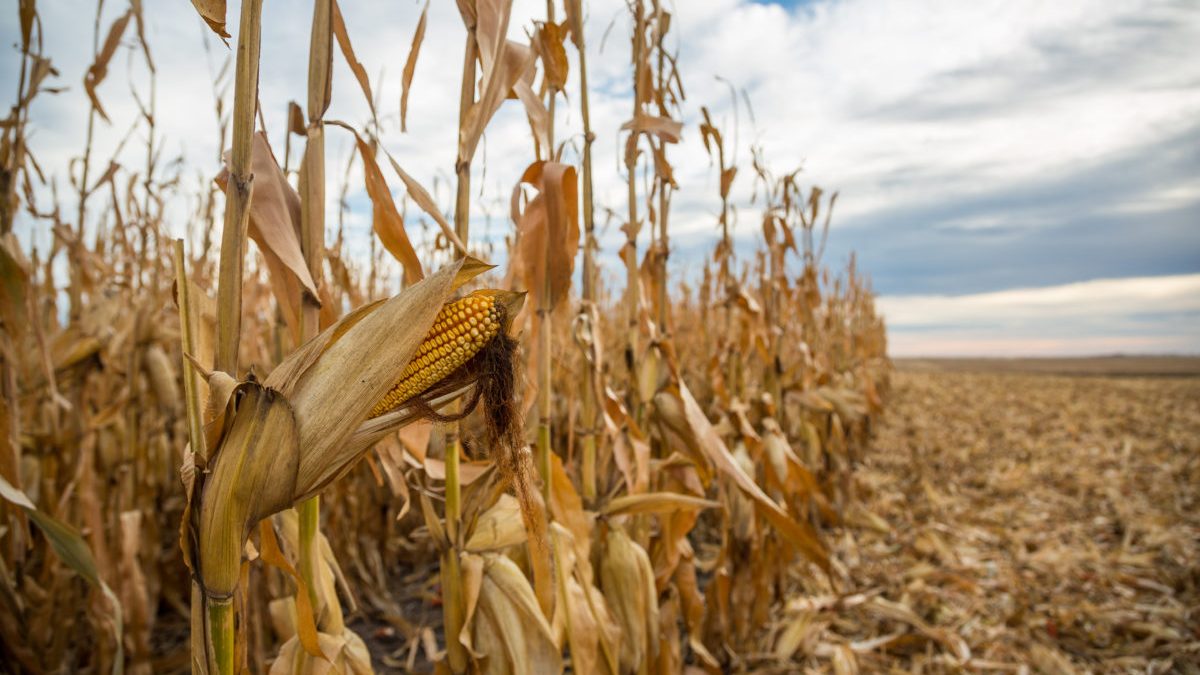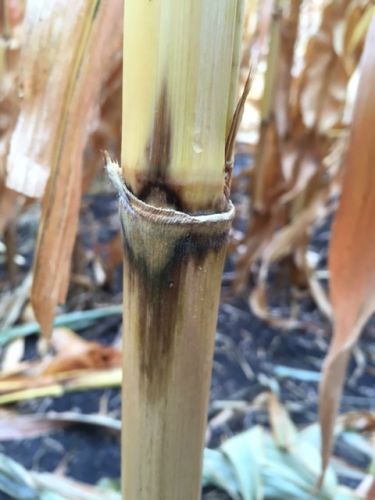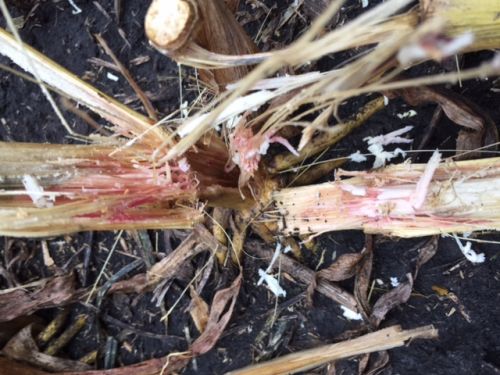The Importance of Staging Your Corn Harvest by Stalk Integrity

Originally published in September, 2015, this ‘Rich on Agronomy’ article features extremely timely material to this year’s corn harvest. For this fall’s version, we’ve taken Rich’s advice and had Mike Larson add a bit more information that applies directly to this year’s corn conditions. As always, give Mike a call with any corn questions!
This fall, corn stalk rot is rearing its ugly head in fields across the region. Because stalk rot can cause potential yield losses of up to 20%, fields where it is developing should be targeted for early harvest to minimize loss.
Stalk rot develops when good growing conditions early in the season are followed by stress after pollination. This is exactly what many regional growers experienced this year–high yield potential established early followed by late season stress.
Responding to this stress (moisture, foliar diseases, fertility, cloudy weather, etc.) during kernel fill, the plant “steals” the needed nutrients and carbohydrates from reserves in its stalks and roots, utilizing these nutrients to finish filling. This cannibalization weakens the stalk and roots, making the plant more susceptible to stalk rot.
I spotted some anthracnose indicators several weeks ago. That has since manifested into anthracnose stalk rot. While scouting, I’ve also discovered Fusarium and Gibberella stalk rots. We have also had an influx of European Corn Borer, which causes stalk lodging, this growing season that has reached the economic threshold (see more info here) in many conventional corn hybrids.

A shiny black discoloration that develops on the stalk late in the season is a symptom of anthracnose.
Scout your corn fields by doing a “push test” to assess the risk of lodging before harvest. Select 10 plants in a row in 10 areas, or about 100 plants. Simply walk the rows and push the plants to about 45 degrees to see if they break or are weak. If more than 10% of the stalks lodge when pushed, move this field up in your harvest schedule.
Crop rotation can help in managing stalk rots. Anthracnose is air-borne, overwintering in the residue, so rotating crops will help prevent future stalk rot. Gibberella and Fusarium are soil-borne diseases, starting in the roots and moving into the stalks. These diseases can survive in the soil longer, so crop rotation is also important for prevention.
Select hybrids with high stalk strength and good disease ratings. Peterson Farms Seed considers these factors when selecting hybrids that will be stable for our challenging growing environment.
There are many stalk rots affecting corn stands this fall. Take time to scout fields for lodging issues. Harvest fields in order of stalk quality instead of harvesting in order of planting date. Although drying cost may be a concern, this expense is likely a better option than potential yield loss due to lodging.












